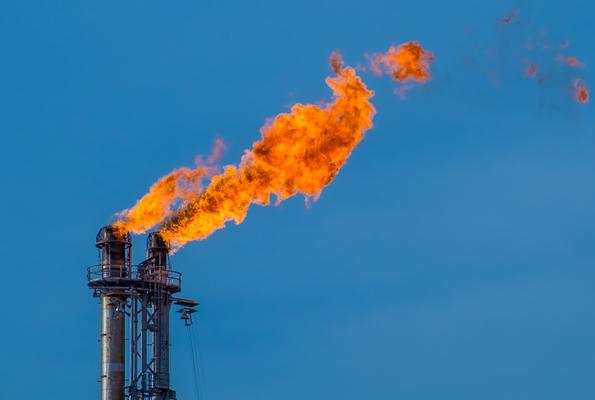Act NOW and tell EPA to finalize strong #CutMethane safeguards!
Download this fact sheet as a pdf
Methane pollution from the oil and gas sector is accelerating the pace of climate change and harming the health of our families and communities — and it is a problem that is only getting worse.
Every day that passes without strong federal methane safeguards in place is a missed opportunity to reduce climate and air pollution from the oil and gas industry and protect the health and wellbeing of communities across this country. We cannot continue to wait.
Methane pollution from the oil and gas industry is fueling the climate crisis
Cutting methane pollution from the oil and gas industry is the fastest way to slow the rate of climate change.
- Methane has more than 80 times the warming power of carbon dioxide over the first 20 years after it reaches the atmosphere. Even though CO2 has a longer-lasting effect, methane sets the pace for warming in the near term.
- Every year, polluters in the oil and gas industry emit 16 million metric tons of methane into our atmosphere.
- Despite warnings from the UN panel on climate change, global methane levels continue to skyrocket. In 2021, methane levels increased by 17 parts per billion – the largest amount since measurements began nearly 40 years ago, according to the National Oceanic and Atmospheric Administration.
Methane pollution from the oil and gas industry is a threat to public health
Cutting methane pollution from the oil and gas industry is essential to protecting public health. A geospatial analysis released by Earthworks and FracTracker found that more than 17.3 million people, including nearly 3.9 million children under 18 reside within a half mile health threat radius of the 1.5 million active oil and gas production facilities in the United States.
- Toxic pollutants released alongside methane, such as volatile organic compounds (VOCs), can worsen asthma and respiratory disease while exposure to toxics like benzene can increase the risk of cancer, cause immune system damage, and developmental problems.
- Living near unconventional oil and gas wells has been shown to shorten life spans for residents 65 and older.
- According to a recent peer-reviewed paper, more than 18 million people live within 1 mile of a well, including communities of color, people living below the poverty line, seniors, and children. The report also found 41 clusters of high density wells overlapping with historically marginalized population groups. These are concentrated in California, Louisiana, New Mexico, Pennsylvania, Texas, and West Virginia.
- Another recent study found that flaring in North Dakota led to an increase in emergency room visits and that economically-disadvantaged and communities of color were more likely to be exposed to those pollutants.
EPA must act to cut methane pollution from the oil and gas industry now
EPA must publish a draft rule that builds on the proposal released in Fall 2021 and does the following:
- Eliminates pollution from routine flaring
- Requires frequent inspections at small wells with leak-prone equipment
- Follows through on the EPA's commitment to adopt a community monitoring program
How do small wells with leak-prone equipment contribute to the methane pollution crisis?
- A study published in the journal Nature Communications reveals that low-producing oil and gas wells are responsible for approximately half of the methane emitted from all well sites in the United States while accounting for only 6 percent of the nation’s oil and gas production.
- EPA's current proposal would allow smaller wells with leak-prone equipment to forgo regular monitoring, despite the fact that the science is clear about the outsized levels of pollution from these wells. This is a big problem since operators wouldn't be required to factor in major pollution events called super-emitters or equipment failures.
- Nearly 8 million people across the country live within half a mile of these well sites. A closer look at the data reveals that pollution from these wells has a disproportionate impact on many historically marginalized or vulnerable communities. This tool from EDF allows folks to take a look at how oil and gas pollution is impacting their communities.
What is flaring?
- When companies rush to extract oil, some forgo investments necessary to capture and sell gas and instead burn it as a waste product, emitting a host of climate and health-harming pollutants. Many flares have been found to malfunction or fail entirely, spewing methane directly into the atmosphere.
- EPA must follow the lead of states like Colorado and New Mexico and move to eliminate pollution from routine flaring except in emergency situations.
How can the EPA protect frontline communities?
- Incorporating community programs will expand EPA's capacity to identify and fix leaks at sites across the country, and help curb methane waste and pollution.
- EPA must accept and prioritize monitoring results from communities and ensure major leaks that are harming nearby communities are fixed quickly.
Finalizing the strongest safeguards against methane pollution from the oil and gas industry is essential to advancing environmental justice, slowing the rate of climate change, and keeping everyone's air clean and safe to breathe.
We cannot miss out on this opportunity to cut methane, protect communities, and tackle the climate crisis.
Act NOW and tell EPA to finalize strong #CutMethane safeguards!
